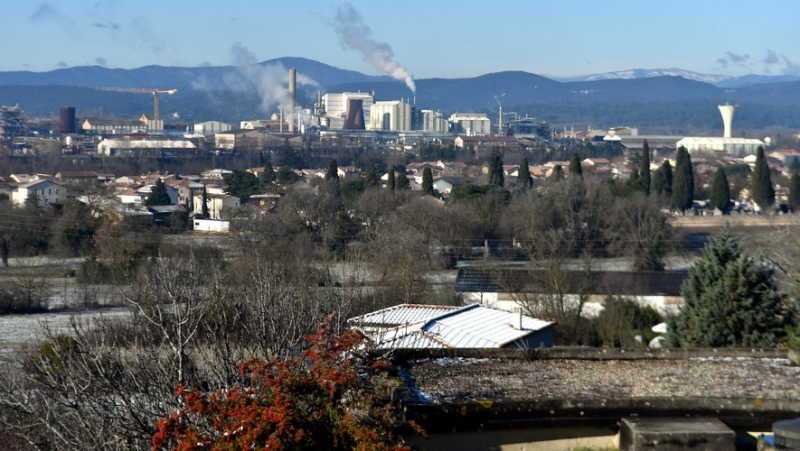Brain cancer in Salindres: no preferred lead and no “strong hypothesis” retained in the final report

The Salindres chemical platform is at the center of all the questions to which the health authorities' report does not answer. Midi Free – ALEXIS BETHUNE
The report available on the Public Health France website rules out the nuclear possibility, but does not frankly respond to the concerns of the population.
An excessive number of brain cancers in Salindres and Rousson led the Regional Health Agency (ARS) to commission three epidemiological studies between 2006 and 2020.
Coincidentally, the final report drawn up by Public Health France was discreetly unveiled on February 6, in the sub-prefecture of Alès, the day when the NGO Génération futures revealed possible pollution of the air. ;water with eternal pollutants, PFAS, linked to the Salindres chemical platform.
Still no preferred avenue to explain brain cancers
In the document provided to elected officials, industrialists and some associations defending residents of Salindres, the actions of State services are detailed. Investigations were carried out by the Regional Directorate for the Environment, Planning and Housing (Dreal), the Nuclear Safety Authority (ASN) and the Institute for Radioprotection and nuclear safety (IRSN). Measurements in the factory, around Lake Ségoussac where red mud is found, and in the inhabited areas of the two villages, showed nothing significant. The hypothesis of exposure to radioactivity was therefore ruled out.
This avenue seemed the most plausible insofar as it is proven that ionizing rays represent the main risk factor for brain cancers.
The mystery remains complete for scientists who do not seem to have any other avenues to explain the phenomenon: "In the absence of a strong hypothesis on the role of others risk factors, investigations cannot be directed."
At the turn of a sentence, conjectures that could lead to pesticides and electromagnetic fields are mentioned, "but the studies remain inconclusive so far", specifies the report.
The only certainties that scientists have are the excessive number of glioblastomas in the sector (more than three times more than normal) and the absence of radiological abnormalities. Three studies were carried out between 2006 and 2020 and confirm the too many cancers.
Between 2006 and 2010, three cases were observed. Six in the period 2011-2015 and seven between 2015 and 2020. A total of 16 people, eight men and eight women (compared to five statistically expected cases), were therefore diagnosed. 15 patients have now died.
The study of the cases revealed that at least two affected people had resided in Salindres or Rousson for less than two years.
The health survey was gradually expanded. Focused on Salindres and Rousson, the research then focused on an area of six municipalities including Saint-Julien-les-Rosiers, Saint-Martin-de-Valgégales, Laval-Pradel, Saint-Florent-sur-Auzonnet in addition to the two municipalities initials. The report concludes that with 34 cases, instead of almost 13 expected, for a population of 17,000 inhabitants, "the incidence ratio is significant”. The rate is 2.63 times too high.
Idem by further expanding the scope of the study to 81 municipalities. In an area including Uzès, Cruviers-Lascours, Goudargues, Méjannes-le-Clap… or 64,500 inhabitants, it is clear that the cases are still abnormally high (41 glioblastomas instead of 17 expected). Without any real explanation, the administration notes that once again the incidence rate remains more than 2.3 times too high.
This report is therefore far from reassuring the populations.
I subscribe to read more




